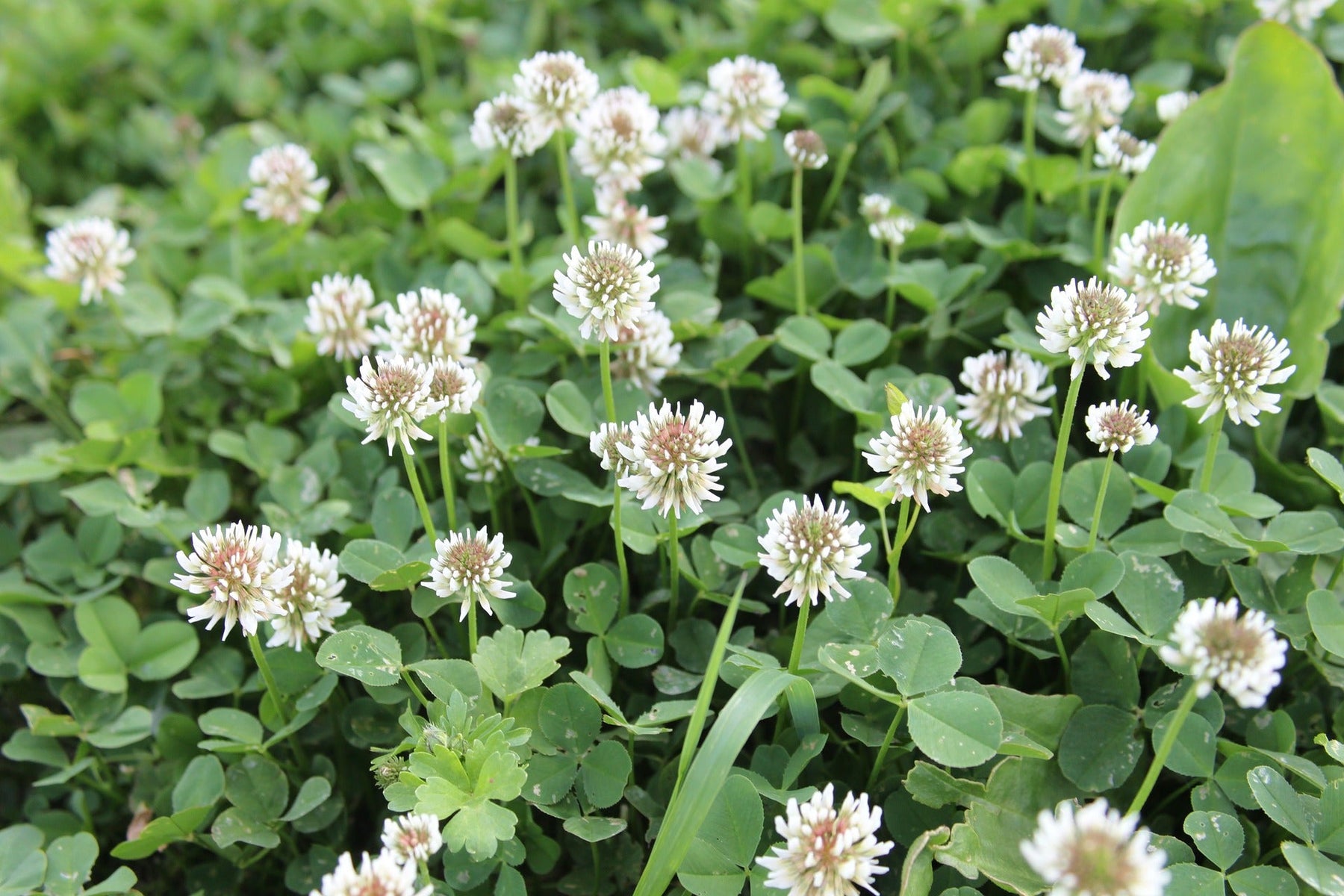
The Ultimate Guide to Cover Crops
Cover Crops are crucial for garden soil health, performing tasks like Nitrogen and Potassium Fixation, Rapid Biomass Growth for Green Manure, Erosion Prevention, Insect Attraction and Repulsion, Soil Aeration, Weed Suppression, and Soil Maintenance.
The most effective cover crops do not yield edible produce. Though this may seem unproductive to some gardeners, the soil-enriching advantages are significant.
There are numerous reasons to cultivate a cover crop and numerous varieties to select from, so how do you determine which is suitable for your garden? Well, that hinges on your objectives and the level of commitment you are ready to make. Weeds in your garden can serve as a cover crop if managed correctly. Different cover crops offer various benefits such as improving soil fertility, suppressing weeds, preventing erosion, and attracting beneficial insects.
Cover cropping is all about thinking ahead and managing as you go. A cover crop's main purpose is to shield the soil surface, while also offering rest, nutrition, aeration, or 'exercise' to the soil environment - or a mix of these benefits.
Generally, cover crops are planted in a garden area after the harvest season for edible crops. Once your summer crops are spent and removed from the space, the cover crop is grown within the space during the fall and winter season.
There are three primary cover crop families, each providing distinct advantages and drawbacks:
- Grains – lLike annual grasses, rye, oats, and wheat. These crops build biomass and break up soil compaction with extensive root systems. Their leaves also improve water infiltration by slowing down the movement of water from rain or overhead irrigation.
- Legumes – Peas, soybeans, clover, and vetch are nitrogen-fixers. Each variety in this family serves a distinct purpose.
- Broadleaves – like buckwheat, mustard, and alyssum These germinate quickly to shade out undesirables, like weeds, and they are easy to turn in for nutrient benefits.
Certain varieties in each family are perennial while others are annual. Similar to other plants, their life cycle typically relies on your hardiness zone.
When Do You Plant Cover Crops?
Sow cover crops in late summer or early fall post-harvest in Canada and northern US, or after harvest in the southern US.
In many areas, it is advisable to sow immediately after the final harvest. Cover crops require a minimum of 4 weeks before the onset of a fall frost to establish. Buckwheat can be planted earlier in areas that have already been harvested. In the spring, you pull, cut, or till the cover crops into the soil. Follow the merchant's instructions for planting buckwheat to ensure successful growth in your area.
For the typical home gardener, various factors must be considered. Particularly, cover crops for home vegetable gardens should be easily incorporated into the soil in the spring.
- Hairy vetch produces so much top growth that it’s very difficult to turn over without a strong mower. Hairy vetch and winter rye are better for field-scale production.
- Perennial cover crops such as red clover (Trifolium pratense) are slow growing and are best used in orchards and vineyards.
For cool-season cover crops (planted in late summer/fall), annuals are the way to go. They die over the winter or naturally complete their life cycle by the next spring. Also, the home gardener should select crops that can be easily incorporated into the garden. Here are some good cool-season cover crops to explore.
Cover Crop Growing Guide
| Sowing Season | Seeding Depth | Seeding Rate (1,000 Sq. Ft.) | Seeding Rate (1 Acre) |
|
| Alfalfa |
Spring & Summer | 1/4 - 1/2" | 1/2 lbs. | 15-25 lbs. |
| Clover, Red | Anytime | 1/4 - 1/2" | 1/2 lbs. | 25-30 lbs. |
| Clover, Sweet | Spring & Summer | 1/4 - 1/2" | 1/2 lb. | 25-30 lbs. |
| Clover, White | Spring & Summer | 1/4 - 1/2" | 1/4 lb. | 5-15 lbs. |
| Cowpeas | Spring & Summer | 1 - 1/2" | 2 lbs. | 75 - 125 lbs. |
| Peas, Field | Spring or Fall | 1 1/2 - 3" | 3 lbs. | 100-150 lbs. |
| Soybeans | Spring to Summer | 1" | 4 lbs. | 150-175 lbs. |
| Vetch, Hairy | Anytime | 1/2 - 1 1/2" | 1 lb. | 25-50 lbs. |
Austrian Winter Peas
How to Plant Cover Crops
Thoroughly prepare the soil by removing all weeds, especially perennial ones, then gently compact the soil with a rake.Spread your seeds evenly over the soil surface. Work them into the soil, press them down with your rake, then water them.
Distribute the seed evenly over the designated area at a depth that matches the seed size. Large seeds require a covering of one-fourth to one-half inch of soil or compost. Small seeds may be left on the surface and gently raked in. Utilize a thin layer of loose straw to safeguard the area from wind and runoff caused by heavy rainfall.
Winter field beans can be sown in rows for optimal growth. Trenches of about two inches deep should be prepared, spaced eight inches apart. Sow seeds four inches apart in the trenches, then cover with soil. Ensure well-drained soil for healthy growth and to reduce root rot.
The quantity of seed required for planting will vary depending on the species. Typically, winter cover crops are sown at a rate of 2 to 3 pounds per 1,000 square feet.
When planting legumes for nitrogen fixing, it is essential to acquire 'inoculant' at a minimum rate of 1 oz. per 10 lbs. of seed. To help the inoculant adhere to the seed, mix 9 parts hot water (non-chlorinated) with 1 part corn syrup (10% solution), let cool, and add a small amount of this solution to the seeds.
Fertilizing is generally not necessary, especially for established garden beds.

![[Seeds] - Caribbeangardenseed](http://caribbeangardenseed.com/cdn/shop/files/gift-card-gift-card-1_1024x1024_dfa857db-9150-4315-a362-7f0bb3fb9c47_60x28.png?v=1722895789)